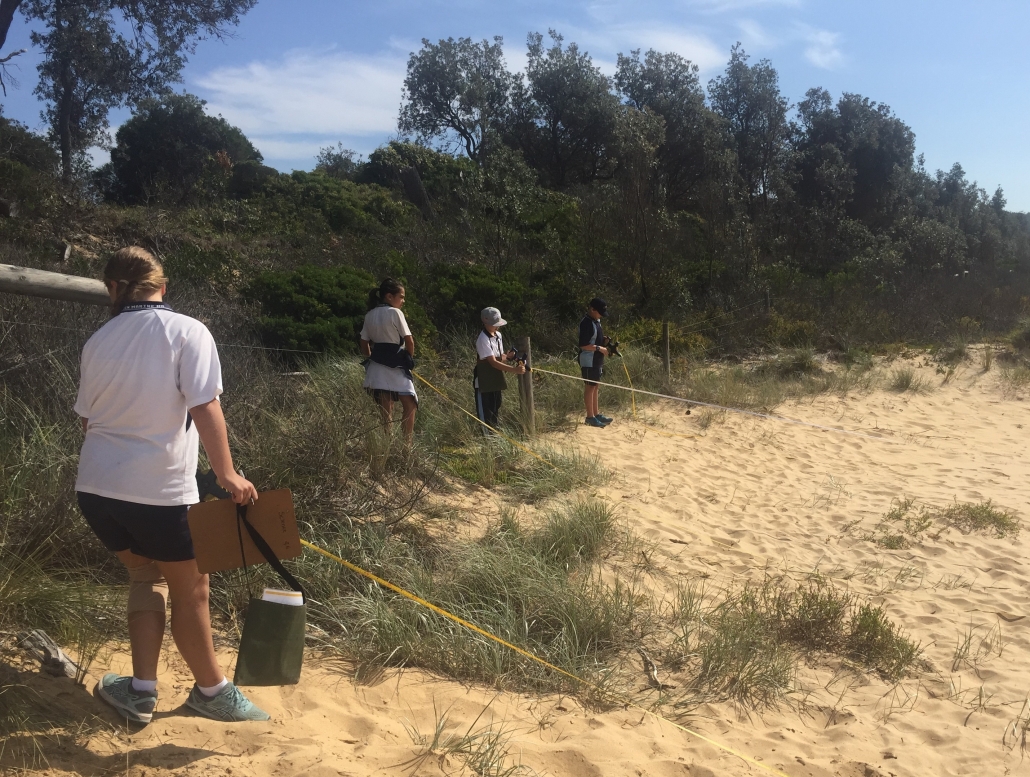Sand Dune Study – A Local Ecosystem

Program Overview
This program allows for students to conduct fieldwork relating to the management of coastal ecosystems. This case study focuses on the fragile beach environment – specifically sand dunes. Students will learn about the importance of sand dunes, in particular sand dune vegetation. They will collect and record data as part of a research action plan on site at Bournda National Park.
Educational Focus
Geography – Environmental Change and Management (S5) / Landscapes and Landforms (S4)
Science – Living World / Working Scientifically
Learning Experiences
Students investigate the biotic and abiotic factors associated with the sand dune vegetation ecosystem found at Bournda National Park.
- Why are sand dunes important?
BEEC staff discuss with students the importance of sand dunes and how sand dunes are formed. Students are able to see first hand the effects of wind and water on the formation of sand dunes. Students are introduced to the variety of vegetation within the dune ecosystem and the adaptations of these plants are discussed.
- Transect Study – Vegetation Profile
Students start from the water’s edge and move inland on a transect line perpendicular to the shoreline. Students use a compass to stay on the transect. Students are required to sketch the transect line surveyed, estimating height in metres above sea level. A vegetation profile is drawn for the transect including locations herbaceous plants, shrubs and trees.
- Quadrat Study – Mapping Vegetation
Students mark out a 10m x 10m quadrat on their transect, marking the corners with flagging tape. Students use symbols to map and record the location of vegetation within the quadrat indicating trees, shrubs, ground cover, leaf litter, rocks, logs and bare sand.
- Measuring Abiotic Variables
Students measure and record abiotic variables such as – temperature (air, surface, soil), relative humidity, light intensity, soil moisture, soil pH and wind speed. Measuremts can be taken both in their quadrat and along the transect.
- Plant and Animal Species Profile
Students focus on one plant and one animal species to record detailed information, including a field sketch and adaptations.
- Human Impacts
Effects of human impact on the sand dunes is observed, recorded and discussed. Students are required to determine management strategies or actions that are in place, or should be in place.
